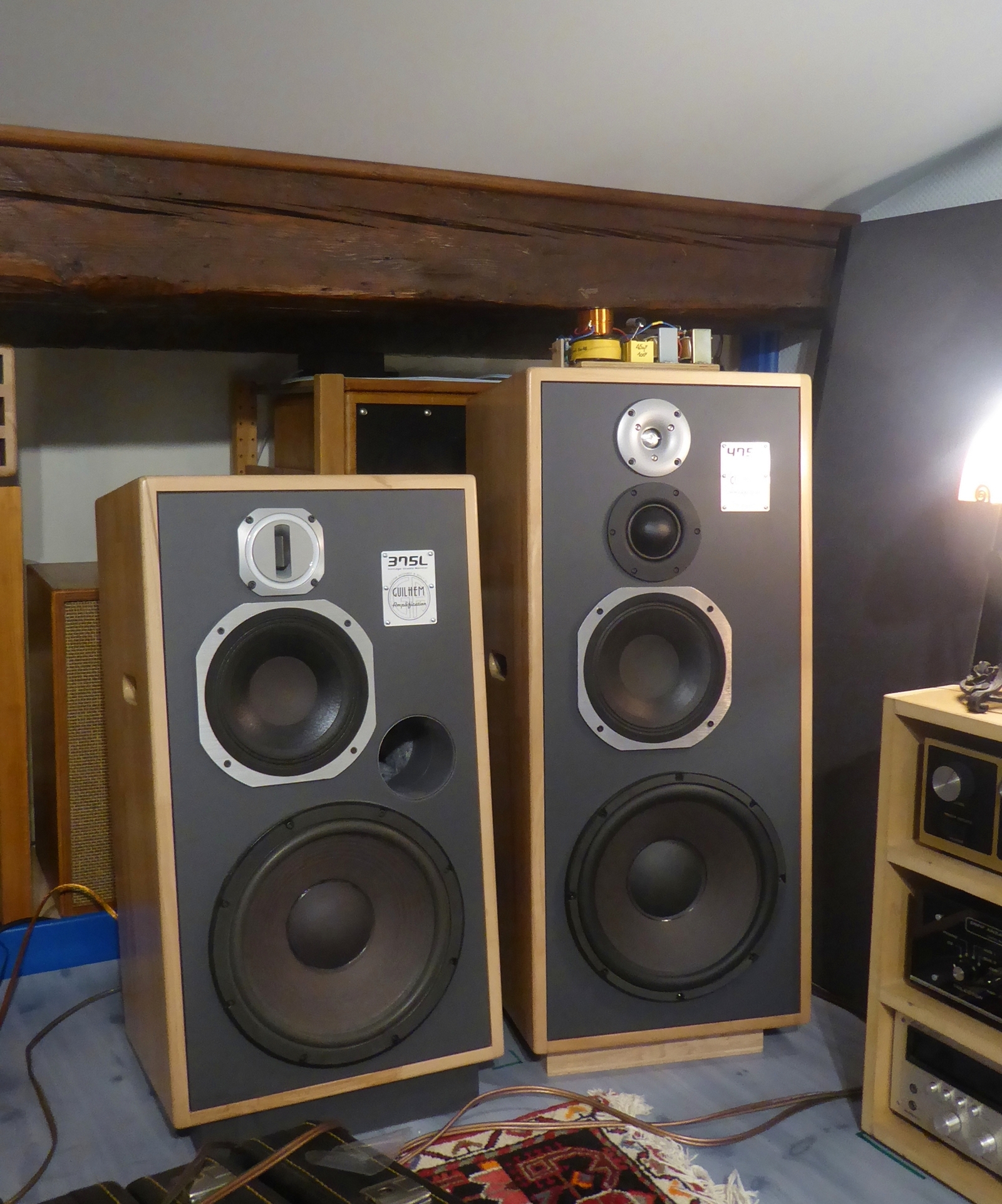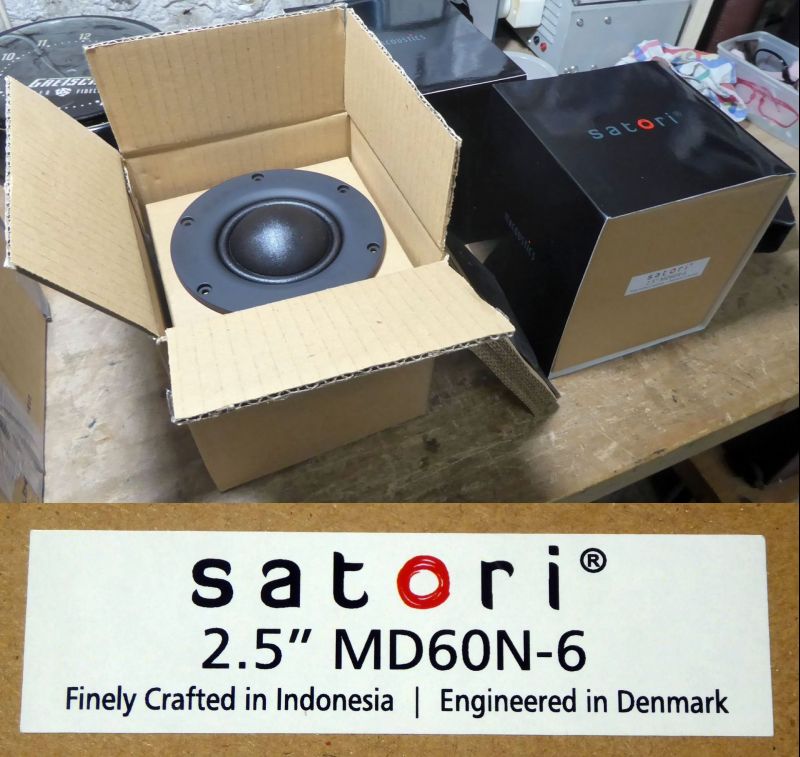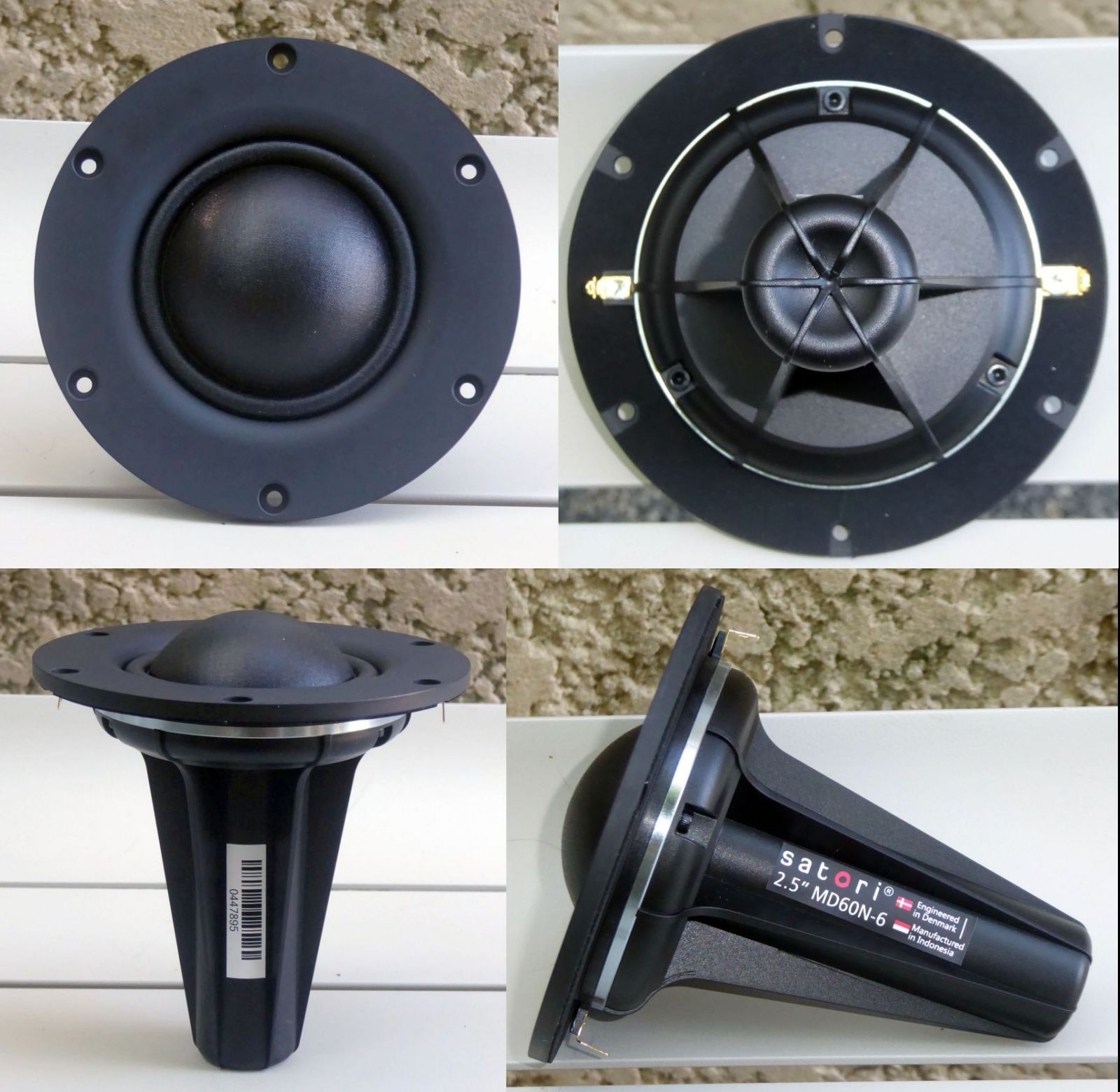Hello,
Another Human Perception meets Acoustics PDF.
“Direct-to-reverberant energy ratio (DRR) For localization in azimuth, reverberation degrades performance (Hartmann, 1983). However, the presence of reverberation for distance judgments is beneficial, as DRR is an important cue for judging sound-source distance (Bronkhorst & Houtgast, 1999;” (clipped from the PDF in the link above)
For azimuth think angular width of the image. Increased directivity helps focus the image width. increased reflections goes the other way including reflections off the back wall.
I have been listening to this one with 100 X 100 degree Constant Directivity waveguide speakers and with headphones.
Headphones are enjoyable, the speakers are better.
Thanks DT
Another Human Perception meets Acoustics PDF.
“Direct-to-reverberant energy ratio (DRR) For localization in azimuth, reverberation degrades performance (Hartmann, 1983). However, the presence of reverberation for distance judgments is beneficial, as DRR is an important cue for judging sound-source distance (Bronkhorst & Houtgast, 1999;” (clipped from the PDF in the link above)
For azimuth think angular width of the image. Increased directivity helps focus the image width. increased reflections goes the other way including reflections off the back wall.
I have been listening to this one with 100 X 100 degree Constant Directivity waveguide speakers and with headphones.
Headphones are enjoyable, the speakers are better.
Thanks DT
Depth perception being mostly monophonic, so long as a full bundle fundamental/harmonics arrive coherently together at an ear, distance will be interpreted and assigned according to cues such as HF relative attenuation, reflection/reverberation ratio etc. (methinks).
Crucially, the outer-ear structure participates in this distance estimation, and is most effective when the bundle of sound hits it at the proper untilted-but-oblique angle (range) before deflecting/diffracting into the ear canal. This is why headphones do not project the soundstage forward away from the wearer (unless modified: open-wing/crossfeed/high-low-both-attenuated/bass-delayed-or-reverb-added).
Crucially, the outer-ear structure participates in this distance estimation, and is most effective when the bundle of sound hits it at the proper untilted-but-oblique angle (range) before deflecting/diffracting into the ear canal. This is why headphones do not project the soundstage forward away from the wearer (unless modified: open-wing/crossfeed/high-low-both-attenuated/bass-delayed-or-reverb-added).
I did a bunch of experiments with crossfeed headphone stereo perception, using Chord Hugo crossfeed function, foobar2000 Meier crossfeed plug-in, and more recently a classic crossfeed circuit (Linkwitz-Chu Moy). I was able to achieve stereo sound, depth perception with singer/musicians/stage in front of me, albeit smaller and nearer than the presentation through stereo loudspeakers. The music separates/delineates more easily and sounds more natural. This effect requires:
(1) twisting the headphone pads "OPEN-WING" so sound comes from FRONT-LEFT/RIGHT (and very slightly above if...
(1) twisting the headphone pads "OPEN-WING" so sound comes from FRONT-LEFT/RIGHT (and very slightly above if...
- wchang
- Replies: 14
- Forum: Headphone Systems
Last edited:
No, depth perception is not mono only.
But you don't need stereo to have it as when you locate a mic you choose the ratio of direct/rev level, the profile of ER, etc,etc,...
It can be faked too by simple variation of parameters: high end contents and relative level.
In stereo things are more complex though. Each kind of couple have it's own behavior and are either coincident ( rely on delta amplitude) spaced ( rely on delta phase) or a mix of both. All have pro and cons and they kind of differe in how the mechanism at play process audio. Hence different renderings. I suggest read what is linked in message #38.
I'm not sure about your analysis either. I had experience in venue where acoustic illusion were used through architectural tricks and coherence in time are not paramount for depth perception imho.
But you don't need stereo to have it as when you locate a mic you choose the ratio of direct/rev level, the profile of ER, etc,etc,...
It can be faked too by simple variation of parameters: high end contents and relative level.
In stereo things are more complex though. Each kind of couple have it's own behavior and are either coincident ( rely on delta amplitude) spaced ( rely on delta phase) or a mix of both. All have pro and cons and they kind of differe in how the mechanism at play process audio. Hence different renderings. I suggest read what is linked in message #38.
I'm not sure about your analysis either. I had experience in venue where acoustic illusion were used through architectural tricks and coherence in time are not paramount for depth perception imho.
Last edited:
Yes it's individual but it will also be normalised by the interaction and calibration of the simultaneous use of eye and ear. So in the end, its the same for most people.Sorry that is not correct. Like it or not the Engineers ear/head/body transfer function is an integral part of the engineer's perception as they perform the mix.
//
Thanks for this krivium.Worth a read imho. BBC R&D Report : Controlled Image Design
But there is an even earlier BBC paper; probably `early 1970s which reported experiments on stereo in anechoics. Peter Fryer pointed it out to me when I was doing the same thing in the late 70s.
My work and the BBC stuff showed stereo is terrible in anechoics. It improved tremendously when they put a floor down to get some early reflections.
It turns out that early reflections are vital for good stereo. Michael Gerzon did a lot of work on this. Look up his seminal work which tied together nearly ALL the early research and some new stuff too.
YES. You can 'measure' imaging. There are 2 aspects. The 'correct' direction and the 'size' of the image. And there are big differences whether you allow the listener to move his head. Gerzon encapsulates all this in his Rv & Re vectors and their 'vector magnitude'.
My $0.02 is that when you do this sh*t, you need to test REAL LIFE too. There's loadsa 'modern' stuff, eg with High Order Ambisonics, that strives to achieve 'imaging that is better' than real life.
In the 70s BBC paper, there is a pic of an early attempt at a Greene-Lee neckbrace. I developed this with Robert Greene of The Absolute Sound this Millenium to force the listener to rely only on fixed head cues but the BBC paper shows the idea is much older. 😊
Michael's theories encapsulate (give the same answers as) ALL the theories of directional perception except for the 'impulsive HF time arrival cues'.
Last edited:
We should have to look into BBC's paper database to find the paper you talk about. I will dig a bit into it tonight to see if it's availlable.
Yes it's individual but it will also be normalised by the interaction and calibration of the simultaneous use of eye and ear. So in the end, its the same for most people.
//
Individual only to a limited degree.
Head Transfer Functions are more alike than different.
So yes, much the same for most people.
Last edited:
Yet I think head transfer function may differ quiet a lot but it doesn't matter as its is calibrated away in the end to give the same hearing experience for these different head shapes and hair styles 😉 - or we wouldn't be here today...
//
//
The 4-way on the right looks a bit too complex for me.
My favorite large format mid drivers are;
JBL 2118 8 inch
JBL 2123 10 inch
They are both low excursion low Intermodulation Distortion drivers.
To match the 90 X 50 degree coverage of the JBL PT95 waveguide, the upper crossover frequency of the 2123 is about 2200Hz.
My favorite large format mid drivers are;
JBL 2118 8 inch
JBL 2123 10 inch
They are both low excursion low Intermodulation Distortion drivers.
To match the 90 X 50 degree coverage of the JBL PT95 waveguide, the upper crossover frequency of the 2123 is about 2200Hz.
Could you please elaborate on this "exception"? I noticed in your brief summary of human-measured imaging only "directional perception", "correct direction" and "size of the image", but no mention of distance perception/soundstage depth.Michael's theories encapsulate (give the same answers as) ALL the theories of directional perception except for the 'impulsive HF time arrival cues'.
My small 5" Monitor Audio Studio 2 with AlMg drivers/first-order XO (cost maybe $1500 in the 90s) has excellent phase and imaging, but is not offset-baffle/time-aligned. The small Mark Audio Alpair 5 AlMg fullrange in factory plywood cabs ($200 thirty years later) in direct comparison imaged distinctly better than the Mo in the depth/distance dimension, taking on what some call a "holographic" layering of the soundstage.
I can diy good-imaging 2-ways with phase-alignment only; same everthing but with time-and-phase-alignment, clearly better imaging (holographic), transcients (realistic attack), and resolution of detail -- the most obvious being a deeper soundstage, which remained deep even when one channel was cut and it collapsed horizontally toward the still-playing speaker.
Were any experiments done along these lines?
Last edited:
In the 70s BBC paper, there is a pic of an early attempt at a Greene-Lee neckbrace. I developed this with Robert Greene of The Absolute Sound this Millenium to force the listener to rely only on fixed head cues but the BBC paper shows the idea is much older. 😊
Glad you brought up this interesting, brain-hurting subtlety, as I had done tests and tried to reason out/reconcile results with Fletcher (1934) ears' angular sensitivity pattern.
Equilateral-triangle toe-in speakers to aim very high frequency at the ears and prevent/ignore sidewall reflections, for now. When the listener turned toward an apparent sound source P off-centerline, say toward the right, the right-speaker signal RS heard by the right-ear was likely diminished (it no longer hit right-ear at optimal front-right angle, but closer to front-straight); RS heard by the left-ear was likely increased by the head-turn, to be more in balance with the right-ear. AND, the left-speaker signal LS heard by left and right ears both likely diminished, further subordinating LS (weaker for P to start with) to RS (stronger for P). But (how) would the Fletcher angular sensitivity curves actually work out, miraculously left-right-ears perfectly balanced facing fixed-point P, as if it were a real-life sound source? Haven't done the math, but testing my speakers/set-up -- not exhaustively and perhaps aided just a little by visual/memory effects -- apparently so! Consistent lateral soundstage subject to head-turn.
Somewhat related, head-tilt forward/back. This made a huge difference in sound quality! Perhaps speakers aren't offset-baffle/time-aligned for a practical reason: "most home users" listened to music/vids reclined on the sofa, their ears tilted back and somehow this compensated physiologically for the otherwise early arrival of tweeter signal.
Audio is crazy.
Michael's theories encapsulate (give the same answers as) ALL the theories of directional perception except for the 'impulsive HF time arrival cues'.
This has been far less tested and pontificated on than the 'LF phase/velocity' and 'MF/HF energy models of directional perception. In fact I remember only one study by one author in one of Michael's references in "General Metatheory ..". It wasn't particular convincing either ... which is why I can't remember more details.Could you please elaborate on this "exception"?
BTW, "General Metatheory ..." is REQUIRED READING for anyone seriously interested in auditory directional perception as it has nearly all the references on the subject. The appendix uses his juju to explain many 'stereo phenomena'.
If some kind soul has a copy, may I beg one via PM ... purely for research and private use of course 😊
This is a separate subject that Michael and Peter Craven (the co-inventor of the Soundfield Mike) have discussed elsewhere. Peter points out that only 2 stereo microphone arrangements correctly capture the sound of a good hall. One is Blumlein perfect Fig 8s at 90. The other is perfect omnis. There are the only arrangements that treat ALL directions 'equally' and this is VITAL for good distance perception bla blaI noticed in your brief summary of human-measured imaging only "directional perception", "correct direction" and "size of the image", but no mention of distance perception/soundstage depth.
John Atkinson was surprised when I told him this. But when he used a Mk4 Soundfield for the first time, this was exactly what he found.
My thoughts on time alignment are in Is Linear Phase Worthwhile? After nearly 50 yrs, I'm surprised there isn't anything I would change in that paper.I can diy good-imaging 2-ways with phase-alignment only; same everthing but with time-and-phase-alignment, clearly better imaging (holographic), transcients (realistic attack), and resolution of detail -- the most obvious being a deeper soundstage, which remained deep even when one channel was cut and it collapsed horizontally toward the still-playing speaker.
Were any experiments done along these lines?
If you don't toe-in your speakers, you are fooling yourself if you think you have 'good imaging'. In fact you need to toe them in MUCH more than pointing at your ears. see LOUDSPEAKERS and the STEREO IMAGE - GP Millward, HFN & RR Nov 84.Equilateral-triangle toe-in speakers to aim very high frequency at the ears and prevent/ignore sidewall reflections, for now ...
Again, if any kind soul has a copy ....
Test this for yourself by playing a mono signal, sitting exactly between your speakers and just tilting or moving your head slightly.
Accurate HRTFs are important for 'fixed head' hearing. But 'fixed head' cues are COMPLETELY DOMINATED by 'moving head' cues. One of Michael's big contributions in "General Metatheory ... " is showing the equivalence of the models that allow 'large' head movements with those that only allow 'small' head movements.Yet I think head transfer function may differ quiet a lot but it doesn't matter as its is calibrated away in the end to give the same hearing experience for these different head shapes and hair styles 😉
If you have Head Tracking for your surround to binaural decode, assuming a slightly squashed Ovoid of about the right size gives sufficiently accurate HRTFs for the zillion different Mk1HHs
The Greene-Lee neckbrace and Malham-Van Gogh experiment test and confirm these FACTS. It's called the Malham Cap here.
Perhaps an even bigger contribution was his realisation that the Mk1HH uses many cues to localise. The most important aspect of 'good sound' is for as many of these cues to support each other ... as they do in Real Life.
If they contradict, while you might have 'good localisation' in a particular experiment. you get Listening Fatigue and things don't sound real. This was the case in some of the early Surround Sound systems.
For good sound, the perceived directions don't even have to be accurate. Only that they appear like in Real Life. That's why reproducing good ambience is so difficult for surround systems. A couple of speakers randomly splashing stuff around doesn't cut it.
Last edited:
- Home
- Loudspeakers
- Multi-Way
- Bigger midranges/speakers have better imaging?


